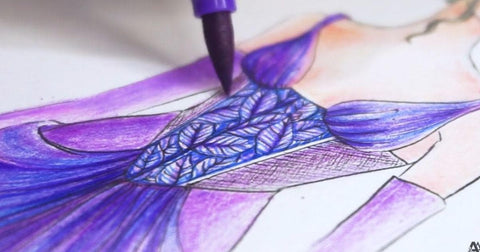How to Nurture Your Emotional Well-Being as a Watercolorist
Last Updated: October 8, 2025
In today's fast-paced and stressful world, it's more important than ever to prioritize our mental and emotional well-being. As a watercolorist, you have a unique opportunity to use your art as a tool for nurturing your emotional and mental health.

In this blog post, we'll explore the powerful connection between art and mental health, and discuss how you can use your passion for watercolor painting to enhance your emotional well-being.
The Connection Between Art and Mental Health
It's no secret that engaging in creative activities can have a positive impact on our mental health. Whether it's painting, drawing, sculpting, or any other form of artistic expression, the act of creating art can be incredibly therapeutic.

Palette Perfection Artists' Watercolor Tube Bundle
Studies have shown that engaging in artistic activities can reduce stress, increase self-esteem, and improve overall mood. For watercolorists, the meditative and calming nature of the medium can be particularly beneficial for promoting emotional and mental well-being.

Using Watercolor Painting to Nurture Emotional Well-Being
As a watercolorist, you have a unique set of tools at your disposal to nurture your emotional well-being. The fluidity and transparency of watercolors allow for a wide range of expressive techniques that can help you explore and process your emotions. Here are some ways you can use watercolor painting to enhance your emotional well-being:

1. Mindful Painting
Engage in mindful painting exercises to focus on the present moment and let go of stress and anxiety. Use the act of painting to center yourself and cultivate a sense of calm and relaxation.

2. Emotional Expression
Use watercolor painting as a means of expressing and processing your emotions. Allow yourself to paint intuitively, letting your emotions guide your brushstrokes and color choices.
3. Self-Reflection
Use your watercolor paintings as a tool for self-reflection. Take the time to observe and analyze your artwork, and consider how it reflects your current emotional state.

Artists' Watercolor Tube - Permanent Yellow Deep
4. Creative Exploration
Use watercolor painting as a form of creative exploration. Allow yourself to experiment with different techniques and styles, and use your art as a means of self-discovery and personal growth.

The Therapeutic Benefits of Engaging in Artistic Activities
Engaging in artistic activities, such as watercolor painting, can have a range of therapeutic benefits for your emotional and mental well-being. Here are some of the ways that art can positively impact your mental health:

- Stress Reduction: Engaging in artistic activities can help reduce stress and promote relaxation, allowing you to unwind and recharge.
- Emotional Release: Creating art can provide a healthy outlet for expressing and processing difficult emotions, helping you to release pent-up feelings in a constructive way.
- Self-Exploration: Artistic activities can help you explore and understand your inner thoughts and feelings, promoting self-awareness and personal growth.

- Mindfulness: Engaging in creative activities encourages mindfulness and being present in the moment, which can help reduce anxiety and improve overall well-being.
- Self-Expression: Artistic expression allows you to communicate thoughts and emotions that may be difficult to put into words, providing a powerful means of self-expression.

Incorporating Art Into Your Self-Care Routine
As a watercolorist, you have a valuable tool for nurturing your emotional and mental well-being. By incorporating regular art-making into your self-care routine, you can reap the therapeutic benefits of creative expression. Here are some tips for incorporating art into your self-care routine:
- Schedule Regular Art Sessions: Set aside dedicated time for watercolor painting in your schedule, treating it as an important part of your self-care routine.

- Create a Relaxing Environment: Designate a peaceful and inspiring space for your art-making, where you can feel comfortable and focused.
- Practice Mindfulness: Approach your art-making practice with mindfulness, focusing on the process rather than the end result.
- Seek Community: Consider joining a local art group or class to connect with other artists and share the experience of creating art together.
- Reflect on Your Artwork: Take the time to reflect on your finished pieces, considering how they make you feel and what they reveal about your emotional state.

Embracing the Connection Between Art and Mental Health
As a watercolorist, you have a powerful opportunity to nurture your emotional well-being through your art. By embracing the connection between art and mental health, you can use your passion for watercolor painting as a tool for promoting emotional and mental well-being. Whether it's through mindful painting, emotional expression, or creative exploration, your art has the potential to positively impact your overall well-being.
Take the time to prioritize your mental & emotional well-being through the practice of watercolor painting, and watch as it brings balance and fulfillment to your life. Drop by The Creative Corner for more watercolor tips, tricks, and ideas.






